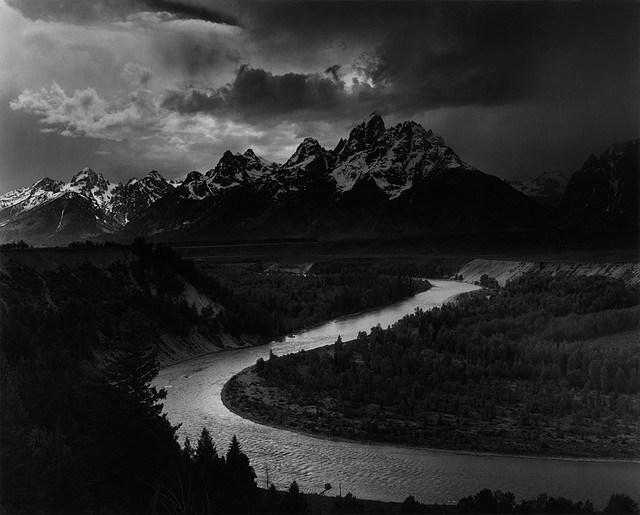The history of photography begins with a look at a landscape: Nicéphore Niépce’s View from the Window at Le Gras in 1826. Since then, countless photographers from around the world have been captivated by the sublime beauty of landscapes. But what is my motivation for photographing a landscape?
.
We can identify two main approaches or ways of expressing ourselves through landscape photography:
On the one hand, a contemplative and aesthetic approach. Beautiful, picturesque, and even sublime landscapes, where composition, color, and details matter. Landscapes where the change of seasons, the crops, and the grandeur and power of nature are evident.
Contemplation becomes the natural response when viewing these images. When you are struck by beauty and overwhelming natural environments, it can lead to reflection on life or yourself, fostering a deeper awareness of the present moment. In this sense, a landscape can evoke happiness and a sense of belonging when viewed in a moment of stillness, allowing the observer to appreciate the subtle nuances of nature’s artwork.
“”… you certainly feel, in contemplation, transported to the bottom of this landscape. You think you are breathing pure and serene air. You dream that you are walking under those trees. You seem to feel the murmur of the stream, and so drawn into the sacred circle of the mysterious life of nature, you feel the eternally active life of creation.”
Carl Gustav Carus
.
 Photography by Ansel Adams
Photography by Ansel Adams
.
 Photography by Hiroshi Sugimoto
Photography by Hiroshi Sugimoto
The other approach is interpretative, using the image of the landscape to convey social, economic, or political concepts. In this approach, the artist expresses their message, often critiquing injustices and the human exploitation of the environment.
Looking at a photograph of this nature stirs emotions, prompting the viewer to feel pain for humanity and ask questions that inspire change and action—exactly what the artist intends.
“I went to Vienna to focus on painting again. While there, I visited its forests and saw beech trees dying. That catastrophe made me question how, as an artist, I could help raise awareness. I wouldn’t go so far as to say that art changes people’s conscience, but an artist can certainly develop a visual language that reflects our problems and encourages others to see the world differently.”
Herman Prigann
:
 Photography by Ignacio Evangelista
Photography by Ignacio Evangelista
.
 Photography by Sergey Ponomarev
Photography by Sergey Ponomarev
.
To photograph is to convey and express both approaches through images: one modern and the other postmodern. Both touch on a sense of belonging and the recognition of our humanity. We live on this earth and inherently belong to it.
This post is a personal interpretation inspired by the first session of the course Understanding Art: Art, Nature, and Museum, taught by Marta Arroyo, curator at IVAM.


